
The Clinton House is a historic building located in downtown Ithaca, New York. It is built primarily in the Greek Revival style, common in older buildings in Ithaca. It currently houses offices and a local charter school. It is directly adjacent to the Ithaca Commons.

The Duke Ellington House is a historic residence at 935 St. Nicholas Avenue, in Manhattan, New York City. Apartment 4A in this apartment house was the home of Duke Ellington (1899-1974), the noted African American composer and jazz pianist, from 1939 through 1961. It was listed on the National Register of Historic Places as a National Historic Landmark in 1976.

King Manor, also known as the Rufus King House, is a historic house at 150th Street and Jamaica Avenue in Jamaica, Queens, New York City. It was the home of Rufus King, a signatory of the United States Constitution, New York state senator, and ambassador to Great Britain immediately after the American Revolution. Descendants of King's family lived in the house until 1896 when Rufus' granddaughter Cornelia King died and the house was sold to the Village of Jamaica. When Jamaica, along with the western half of Queens became part of the City of Greater New York, the house and the property were turned over to the New York City Parks Department which re-designated the land as "Rufus King Park."
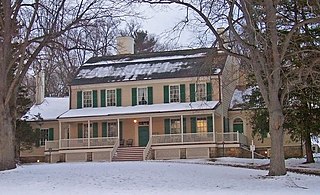
The John Jay Homestead State Historic Site is located at 400 Jay Street in Katonah, New York. The site preserves the 1787 home of statesman John Jay (1745–1829), one of the three authors of The Federalist Papers and the first Chief Justice of the United States. The property was designated a National Historic Landmark in 1981 for its association with Jay. The house is open year-round for tours.
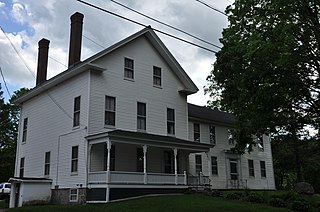
The Daniel Webster Family Home, also known as The Elms, is a historic house off South Main Street in West Franklin, New Hampshire. The house has been designated a National Historic Landmark for its importance as the summer home of Daniel Webster (1782–1852), who owned it from 1829 until his death.

Deke House, the Delta Kappa Epsilon or "Deke" House on the campus of Cornell University, was built in 1893 and was listed on the National Register of Historic Places in 1991. It was designed by William Henry Miller to serve as a fraternity house. Two trees which Theodore Roosevelt planted in front of the house are on the National Register of Historic Trees.

The General Rufus Putnam House is a National Historic Landmark at 344 Main Street in Rutland, Worcester County, Massachusetts, US.

The Emerson–Franklin Poole House is a historic house at 23 Salem Street in Wakefield, Massachusetts. Built about 1795, it was in the 19th century home to Franklin Poole, a locally prominent landscape artist. Some of its walls are adorned with the murals drawn by Rufus Porter. The house was listed on the National Register of Historic Places in 1989.
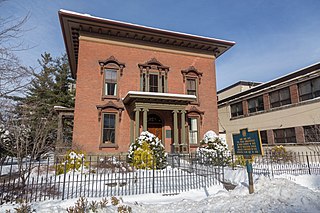
The Boardman House is a historic house located at 120 East Buffalo Street in Ithaca, Tompkins County, New York.

De Witt Park Historic District is a national historic district located at Ithaca in Tompkins County, New York. The district consists of 45 contributing buildings, one contributing site, and three contributing objects. It includes the area developed by the town's founder, Simon De Witt, in the early 19th century. The district includes the separately listed Boardman House and Second Tompkins County Courthouse.

The Rufus M. Rose House is a late Victorian, Queen Anne style house located in the SoNo district of Atlanta, Georgia. Occupying a narrow lot on Peachtree Street, one and half blocks south of North Avenue, the house was built in 1901 for Dr. Rufus Mathewson Rose. The architect was Emil Charles Seiz (1873-1940), who designed many residential and commercial structures in the city, including the 1924 Massellton Apartments on Ponce de Leon Avenue.

The Rufus Arndt House in Whitefish Bay, Wisconsin, United States, was built in 1925. It was designed by Ernest Flagg in a style that suggests Tudor Revival and Cotswold Cottage and built by the Arnold F. Meyer & Co. One of the Ernest Flagg Stone Masonry Houses of Milwaukee County, this residence was listed on the National Register of Historic Places on September 12, 1985.

The Moses Kent House is a historic house on River Road in Lyme, New Hampshire. Built in 1811, it is a good local example of Federal period architecture, most notable for the well-preserved murals on its interior walls, drawn by the itinerant artist Rufus Porter. The house was listed on the National Register of Historic Places in 1984.

The Richard C. Burtis House or Wedding Cake House is a Historic Site in Tuscola County, Michigan. The two-story Second Empire building was built from 1879 to 1880 for Richard C. Burtis, a shoemaker and local landowner. Ornamentation includes brackets and a decorative frieze supporting a mansard roof with decorative slate shingle. A bay window topped by a steep octagonal tower dominates the front facade. The Burtis home appeared on Travel Channel in 2019.
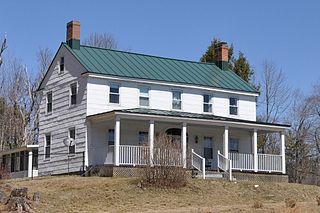
The Capt. Samuel Allison House is a historic house on New Hampshire Route 101, overlooking Howe Reservoir, in Dublin, New Hampshire. Built about 1825 by a locally prominent mill owner, it is a good local example of Federal style residential architecture. The house was listed on the National Register of Historic Places in 1983.

The Daniel Carr House is a historic house on Brier Hill Road in Haverhill, New Hampshire. Built about 1796, the house is most notable for the high quality folk murals drawn on its walls, most likely by the itinerant artist Rufus Porter between 1825 and 1830. The house was listed on the National Register of Historic Places in 1992.
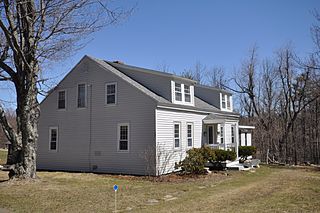
The Benjamin Learned House is a historic house on Upper Jaffrey Road in Dublin, New Hampshire. Built in the late 1760s, it is one of the town's oldest surviving buildings. It is further notable for its association with the locally prominent Learned family, and for its role in the summer estate trend of the early 20th century. The house was listed on the National Register of Historic Places in 1983.

The Rufus Piper Homestead is a historic house on Pierce Road in Dublin, New Hampshire. The house is a well-preserved typical New England multi-section farmhouse, joining a main house block to a barn. The oldest portion of the house is one of the 1+1⁄2-story ells, a Cape style house which was built c. 1817 by Rufus Piper, who was active in town affairs for many years. The house was listed on the National Register of Historic Places in 1983. The home of Rufus Piper's father, the Solomon Piper Farm, also still stands and is also listed on the National Register of Historic Places.

The Solomon Piper Farm is a historic farmhouse at 227 Valley Road in Dublin, New Hampshire. Built about 1794, it is a good example of an early Cape style farmstead. The house was listed on the National Register of Historic Places in 1983. The home of Solomon Piper's son, the Rufus Piper Homestead, also still stands and is also listed on the National Register of Historic Places.

The Elwin Chase House is a historic house at 366 Topsham-Corinth Road in Topsham, Vermont. Built about 1830, it is a well-preserved example of Greek Revival architecture in a rural context. It is most prominent as one of the only known sites in Vermont of the artwork drawn by Rufus Porter, who worked as an itinerant muralist around the time of the house's construction. The house was listed on the National Register of Historic Places in 1977.
























